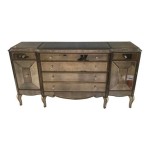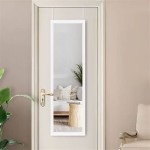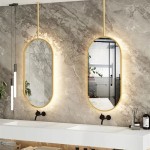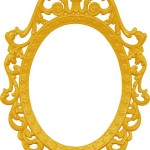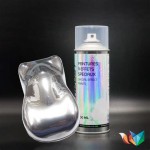Which Mirror Is Used In Headlights Of Motor Cars?
Automotive headlights are crucial for safe nighttime driving, enabling drivers to see the road ahead and be seen by other road users. A key component within the headlight assembly is the reflector, responsible for directing the light emitted from the bulb into a usable beam. Understanding the type of mirror used in these reflectors is essential for appreciating the engineering and physics behind effective headlight design.
Parabolic Reflectors: The Industry Standard
The overwhelming majority of modern car headlights utilize parabolic reflectors. A parabola is a specific type of curve with a unique reflective property: any light rays emanating from the parabola's focal point will be reflected parallel to the axis of symmetry. This creates a concentrated, directional beam ideal for illuminating the road ahead.
In a headlight assembly, the light source (typically a halogen, LED, or HID bulb) is placed at the focal point of the parabolic reflector. The reflector's precisely calculated curvature ensures that the light emitted is collimated into a beam projected forward, maximizing visibility. This principle allows for efficient use of the light source, minimizing scatter and maximizing forward projection.
The Role of Precision in Parabolic Reflectors
The effectiveness of a parabolic reflector hinges on its precision. Even minor imperfections in the reflector's surface can lead to scattering and a less focused beam. Manufacturing processes, therefore, require a high degree of accuracy to ensure the proper curvature is achieved. Modern manufacturing techniques often involve injection molding or vacuum metalizing to create highly precise and durable reflectors.
Materials Used in Headlight Reflectors
Historically, headlight reflectors were commonly made of glass with a reflective coating applied. However, advances in materials science have led to the widespread adoption of plastics. These plastics offer benefits such as lighter weight, greater design flexibility, and improved resistance to breakage. A highly reflective coating, often aluminum or vapor-deposited chrome, is applied to the plastic substrate to maximize reflectivity.
Variations in Parabolic Reflector Design
While the fundamental principle of the parabolic reflector remains constant, there are variations in design to accommodate different headlight types and beam patterns. For example, projectors, a common feature in modern vehicles, utilize a parabolic reflector in conjunction with a lens to create a more precisely controlled and sharply defined beam.
Furthermore, reflectors can be designed with complex facets or segments to create specific beam patterns, such as high beams and low beams. These designs utilize the same principles of parabolic reflection but incorporate carefully calculated variations in the reflector surface to direct light in different directions as needed.
The Importance of Proper Alignment
Even with a perfectly manufactured parabolic reflector, incorrect alignment can significantly impair headlight performance. Misaligned headlights can cause glare for oncoming traffic and reduce the driver's own visibility. Regular headlight alignment checks are crucial to ensuring optimal performance and road safety.
Legal Regulations and Standards
Headlight design and performance are subject to strict regulations and standards to ensure safety and prevent glare. These regulations dictate the allowable beam patterns, intensity, and color temperature of headlights. The use of parabolic reflectors allows manufacturers to meet these stringent requirements while providing effective illumination for drivers.
Evolution of Headlight Technology
While the parabolic reflector remains a cornerstone of headlight design, the technology continues to evolve. Advances in LED and laser lighting are leading to even more efficient and precisely controlled headlight systems. These newer technologies often still rely on the principles of parabolic reflection, albeit with more sophisticated reflector designs and light sources.
The Future of Headlight Reflectors
Ongoing research and development are exploring new materials and manufacturing techniques for headlight reflectors. These advancements aim to improve efficiency, durability, and design flexibility. As automotive lighting technology continues to progress, the parabolic reflector, refined and adapted, will likely continue to play a central role in illuminating the road ahead.
Which Mirror Is Used In The Headlight Of A Car Quora

Which Type Of Mirror Is Used In Headlights Vehicles

Which Mirror Is Used In The Headlights Of A Car

State The Type Of Mirrors Used For I Headlights And Ii Rearview In Cars Motorcycles Give Reason To Justify Your Answer Each Case

8 Name The Type Of Mirror Used In Following Situations A Headlights Car B Side Rear
What Type Of Mirror Is Used In Car Headlights Education Club 24hrs Quora
Which Mirror Is Used In Headlights Of Cars At What Position Bulb Placed It And Why
What Type Of Mirror Is Used In Car Headlights Education Club 24hrs Quora

Flashlights And Car Headlights All Have Converging Mirrors Why Would It Not Be A Good Idea To Use Diverging Mirror Instead Homework Study Com

What Is A Headlamp With Pictures

